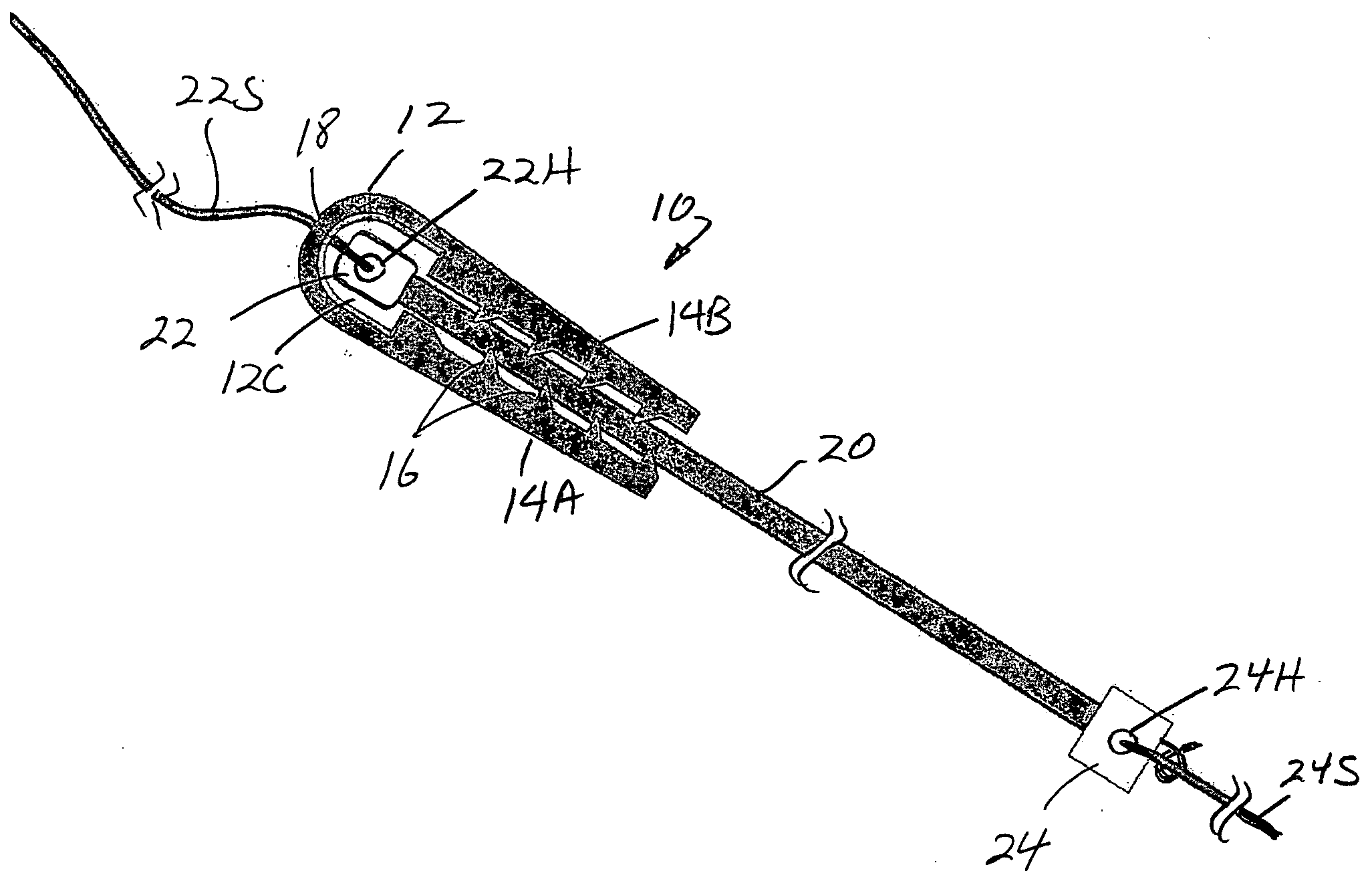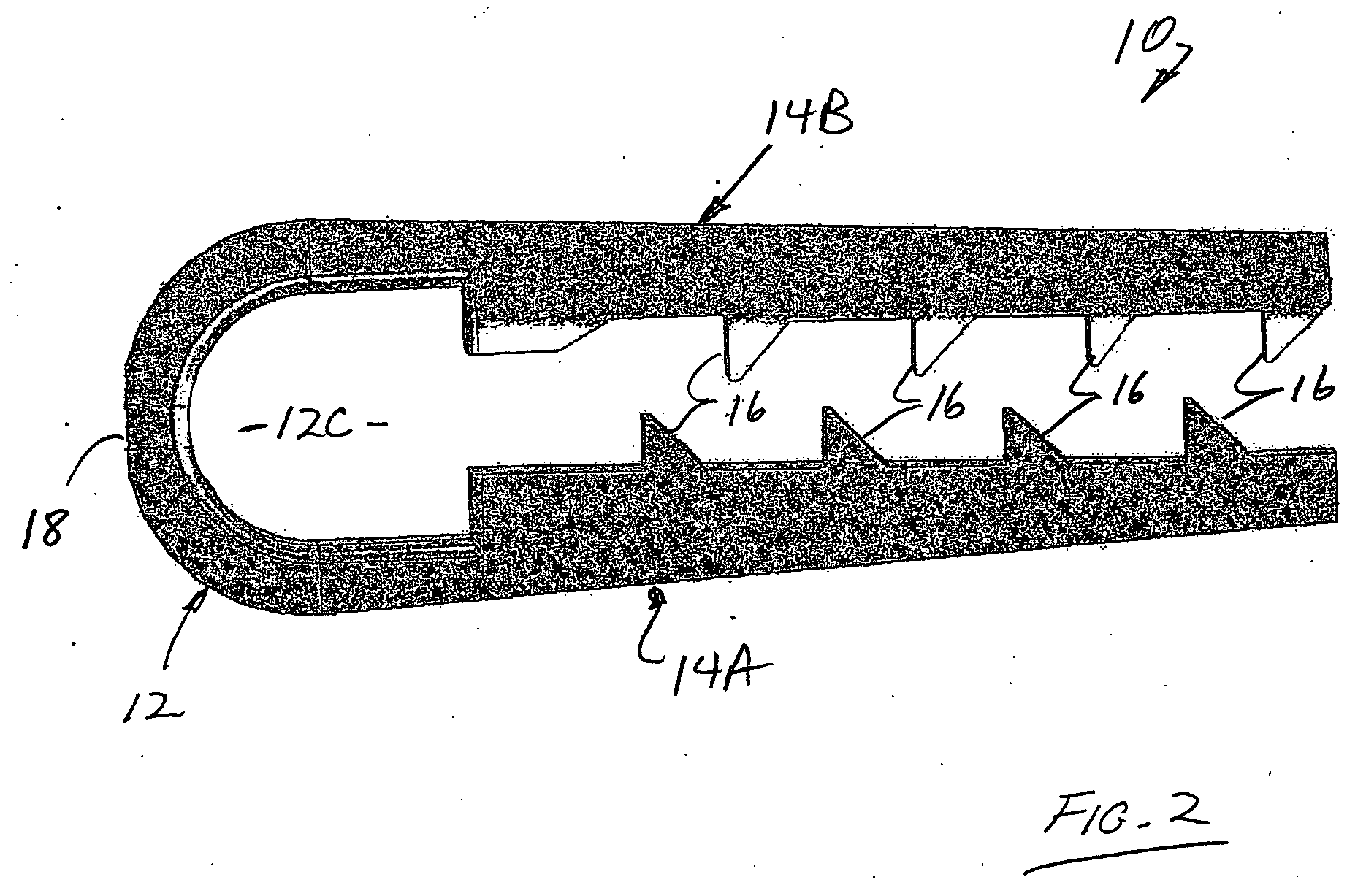Tapered anchor for tendon graft
a tendon graft and tapered technology, applied in the field of fixation devices, can solve the problems of significant reduction of the strength of the fixation, significant loss of bone in the fixation site, and sometimes presented complications, and achieve the effect of effective regrowth of bone, strong and rigid fixation of the tendon graft, and minimal disturbance of tissue metabolism and blood circulation
- Summary
- Abstract
- Description
- Claims
- Application Information
AI Technical Summary
Benefits of technology
Problems solved by technology
Method used
Image
Examples
Embodiment Construction
[0040] Referring to FIGS. 1 and 2, the anchor 10 of the invention comprises a loop 12 having two opposing leafs 14A and 14B formed in a “hairpin” configuration. The loop 12 defines a interior cavity 12C and functions as a living hinge to allow the opposing leafs 14A and 14B to flex inwardly toward each other. The outer surfaces of the opposing leafs 14A and 14B are frustro-conically shaped. The inner surfaces of the opposing leafs 14A and 14B comprise inwardly extending teeth 16 along the length thereof in facing alignment with each other. The leaves 14A and 14B define a longitudinal path therebetween from the cavity 12C. An access hole 18 is formed through the loop 12 of the anchor 10 to allow suture access into the cavity 12C (as described hereinafter). Preferably, as best shown in FIG. 2, the inwardly disposed teeth 16 along one leaf 14A are staggered relative to the opposing teeth 16 of the other leaf 14B.
[0041] Referring to FIG. 3, the anchor 10 of the invention is loaded with...
PUM
 Login to View More
Login to View More Abstract
Description
Claims
Application Information
 Login to View More
Login to View More - R&D
- Intellectual Property
- Life Sciences
- Materials
- Tech Scout
- Unparalleled Data Quality
- Higher Quality Content
- 60% Fewer Hallucinations
Browse by: Latest US Patents, China's latest patents, Technical Efficacy Thesaurus, Application Domain, Technology Topic, Popular Technical Reports.
© 2025 PatSnap. All rights reserved.Legal|Privacy policy|Modern Slavery Act Transparency Statement|Sitemap|About US| Contact US: help@patsnap.com



